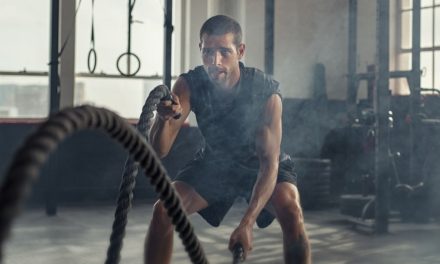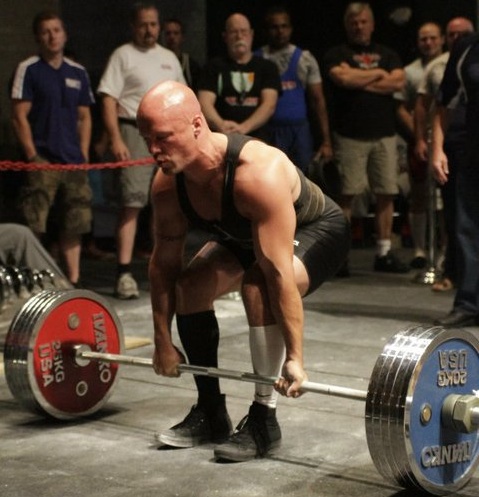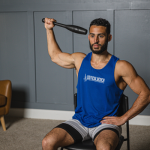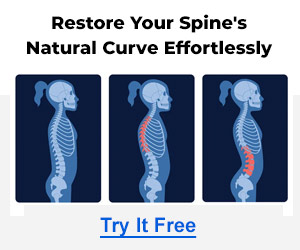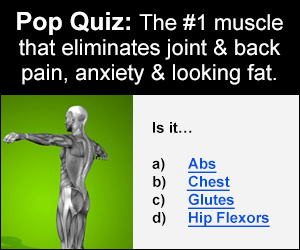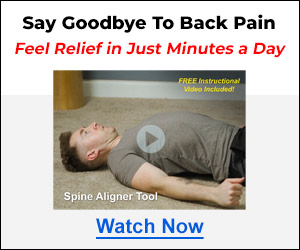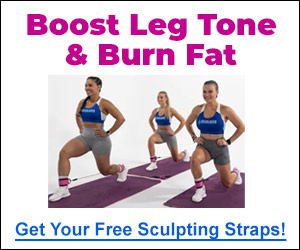Interview with Leading Fat Loss Specialist Ryan Faehnle, CSCS
CW: Well, thank you so much for joining us today. This is Coach Chris Wilson from CriticalBench.com and I am delighted and I’m not joking, I am delighted to have with me on the line today, and Ryan, please if you will, I want to get your last name right. Is it Fanely [phonetic]?
RF: Very close. It’s Faehnle, so like Stanley, but with an F.
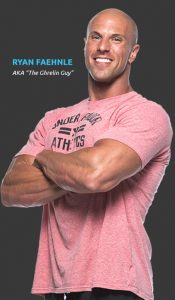 CW: Faehnle.
CW: Faehnle.
RF: Yeah.
CW: Okay, so Fan-ley [phonetic]. Got you. Okay.
RF: Yep. It’s German so there’s a lot of funny letters in there.
CW: Oh, okay, all right. Well, hey, it’s cool and it’s unique and I’ve never seen that name before, ever. So that right away distinguishes you from everyone.
This is Ryan Faehnle on the line with me today. He’s a certified strength and conditioning specialist, but that just scratches the surface. He has trained athletes in different sports at all levels, high school to professional, for over 20 years. He’s worked with NFL Superbowl champions as well as just the ordinary Joe Average and Susie Q. He’s worked with them all, so the spectrum. And he’s traveled the globe, he’s lectured to trainers and to coaches about strength and conditioning and body composition, just a bit of everything. But I want him to go a little bit deeper. So first of all, welcome, Ryan, to the call. I’m very happy to be talking with you today.
RF: Yeah, thanks for having me. I’m excited to dive in. People that know me know that I am extremely passionate about all things strength, conditioning, health, fitness, nutrition, supplementation, so I’m ready to get into it.
CW: Yeah, I mean, you read your bio and it—his bio is like… I mean, I just said like a few sentences. His bio is like two pages. I’m like, jeez, it makes me sound as if I’ve never stepped foot in a gym and worked with somebody in my life when I read your bio.
And anyone with that kind of background experience, obviously, can be intimidating, of course. Because you make it sound as if the fitness and health world just comes easy to you, that it’s natural. It’s a perfect fit. But has that always been the case for you?
RF: Oh, man, it’s funny you ask that, because that’s not even remotely close to being the case. I grew up with a very loving mother who showed her love and demonstrated her love with junk food. So every day I had access to McDonalds, I could drink as much pop as I wanted. Now, to be fair, we also had, you know, she also made a lot of vegetables and she did make some healthy dishes.  But I really was not restricted at all. And so I grew up kind of a chubby kid and I don’t want to say kind of. I was a fat kid, plain and simple. No PC about it. And I got picked on, I got teased. I was bad at sports and eventually I decided I wanted to do something about it. So I began exercising.
But I really was not restricted at all. And so I grew up kind of a chubby kid and I don’t want to say kind of. I was a fat kid, plain and simple. No PC about it. And I got picked on, I got teased. I was bad at sports and eventually I decided I wanted to do something about it. So I began exercising.
Now, my exercise originally came from trying to improve my sport performance for basketball. That was the love of my life, was basketball. I really wanted to be good at it. I had dreams of playing in the NBA and while that didn’t work out, it started me down my career path of being a strength coach and now consultant. And so, but no, the health and fitness does not come naturally. Even as a strength coach I still battled weight issues, especially when I was in my big earlier prime of being strong. I listened to all the power lifters, who cares what your body fat is as long as you have a massive bench press. And so I was still super fat.
And so then it got to a point where I’d had enough. I was 292 pounds, 2-9-2, not lean at all and I kind of looked like I didn’t belong in the industry of the gym. Even though I was strong, I felt like I didn’t belong. So that started me getting onto kind of crazy dieting, like really hardcore. I was tough; I was in the military. So I felt mentally I could do a lot of tough things. So I started doing some hard dieting. Well, eventually that led to like some binge eating issues and if I’m honest with you, I mean, this is something I still battle to this day. It’s like once an alcoholic, always an alcoholic type thing. Even if you haven’t had a drink in 30 years, it’s the same thing for me. I control it and I manage it very well, but man, if something goes wrong and I slip, I could be three boxes deep in cereal looking for answers at the bottom of a cereal bowl.
So, yeah, it has not always come easy to me. So I have to work tail off for everything I’ve ever done. But that is one thing that I can tell you no one does more than me, and that’s work hard to continue my craft, to learn. I read every day. I educate myself. I practice it with my clients and myself. So it’s definitely not been natural, but it’s my love so I’m going to continue to do it.
CW: Yeah. Wow. That’s where I think most experts come out of. They come out of real experience, obviously. And that’s where that passion comes from, too. If you’re educated about something and passionate about something, because you’ve lived it, experienced it, I mean, that just drives obviously your success and your ability to reach people.
RF: No doubt.
CW: No one wants to work with somebody who’s going to help them if they’ve never struggled with something, maybe, themselves.
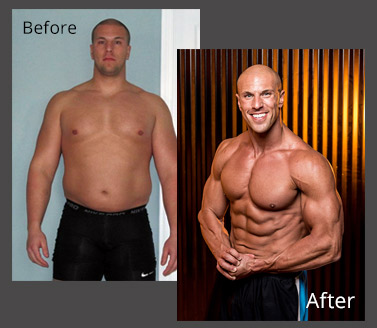
What is it, then, about hunger in particular that completely sucks every bit of willpower from us? Obviously it’s probably the number one driving force why most people fail at any kind of diet. It’s just the hunger that overwhelms. It just takes control. But why is that?
RF: Well, first of all, I want to give you a little background so kind of you can understand the hunger connection. So what I started noticing, both in myself and in clients, clients would have rapid fat loss. So they would have a goal, they would do a diet to achieve a goal and then after the goal, once they achieve whatever they set out to achieve, maybe it was a better beach body or a certain percentage body fat, it was almost like the fat just piled on faster than it came off.
And what I noticed, I started taking notes, and it occurred in all fast fat loss diets. So whether it was ketogenic diet, a high carb diet, a cyclical diet, an Adkins diet, a Zones diet, whatever it was, it happened in all of them and the common thread or the common theme that I found with it was post goal hunger. So after they achieved their goal they literally would eat their results away. They could not stop eating. They were always starving and I knew there had to be a connection.
So I started kind of researching it and what I came upon, which any scientist or physiologist is going know, is the two hormones, leptin and ghrelin, which are basically your hunger and appetite hormones. They’re peptide hormones. They’re secreted at different parts in the body, leptin primarily by fat cells and ghrelin primarily by your stomach. Letptin actually decreases your appetite. So leptin is the hormone that lets you know that you’re full and ghrelin actually increases your appetite.

So leptin is contained in body fat. So if you have a high amount of body fat you’ve got a lot of leptin. You have a lot of the chemical that tells you to stop eating. But here’s the problem, here’s the kicker. Over time, with poor eating habits, poor lifestyle habits, stress, lack of exercise, lack of sleep, you can become resistant to leptin. So basically what happens, your body begins to ignore the signal that you’ve had enough to eat.
Ghrelin is secreted when your stomach is empty and what it does, it gets highest just before a meal to cue you to eat and then it decreases sharply after you eat. Here’s the other kicker though. It’s secreted also in stressful situations. So that’s why we stress eat, right? We binge on candy bars and we binge on potato chips when we’re really stressed because that hormone is secreted during stressful times.
Now, these hormones, everyone’s like, ah man, this sucks, ghrelin, I’m always hungry. Leptin, blah, blah, blah. They are both end survival mechanisms. You don’t want to completely get rid of their function because they’re built to keep us alive. Your body wants to stay exactly as you are because it doesn’t know if you’re just trying to lose five pounds or if you’re starving on a desert island. So these things are regulatory hormones to keep you alive and healthy.
So here is the thing. Weight loss that is too rapid, happens to fast, causes a massive surge in ghrelin levels. So it makes you super hungry. Well, super hungry, suppressing that requires willpower and as you mentioned, willpower, I mean, it’s something we have to overcome. Willpower is kind of like a battery, right? It only lasts for so long and then when the battery runs out you’re in a situation where your body—ghrelin is high, so your body is telling you to eat everything in sight. You’ve lost your willpower and now you’re eating and the weight comes piling back on.
This is a scenario I see all too often. Somebody has high body fat levels, bad eating habits, they don’t exercise. So their body is constantly telling them that they’re hungry and any possible signal that they have to indicate that they’re full is being ignored by the brain. This is a huge hurdle to get over. So a lot of people will start exercising. What is the first kind of exercise everybody wants to do when it’s time to lose body fat, Chris?
CW: They want to start doing some cardio.
RF: Cardio, aerobic exercise. You want to know what the bitch of that is? Aerobic exercise increases ghrelin, so it makes you even more hungry. So now you have this person whose brain is ignoring the fact that they’re full, their stomach is secreting chemicals to the brain that’s telling them that they’re starving and now they’re doing exercise that makes them even more hungry. This is just a whirlwind. Okay?
So now they start doing all kinds of cardio, because they feel like they have to, they go on a super low calorie crash diet and maybe they succeed in losing a bunch of weight really quickly, okay? A lot of people do. Because, again, they can go as long as their willpower lasts. Now, ghrelin levels are through the roof because of how they did it and once the willpower breaks they’re just going to gain crazy amounts of fat, usually, most often, and I’m saying this from personal experience, too, usually becoming fatter than they were before they started. And the vicious cycle repeats with fad diet after fad diet and year after year. People who are genuinely trying to change their bodies are ending up fatter and sicker and just unhappy, depressed. So it’s a bad cycle.
CW: And it’s an awful cycle because as you mentioned, that depression most often leads to more poor choices in food and none of us binge eat—why can’t we just binge eat cauliflower?
RF: Exaclty.
CW: It’s just not satiating enough. It’s not satisfying. When we binge we crave high fat or sugary things.
RF: Yep.
CW: And you’re right, I mean, we’ve all—when you were talking earlier in the call about when you were younger and went through that phase of just being kind of the heavy kid. I had that for a couple of years and man, it’s just such a—some of us never escape it.
RF: Right.
CW: Some of us just can never get out of that funk of poor food choices and having just everything is at our fingertips anymore. You walk in the grocery store and you’re bombarded with all the bad stuff right when you walk in and unfortunately most of us succumb to that.
RF: Right, and that’s the hard part. A lot of the foods that we’re eating, Chris, are foods that do not signal us that we’ve had enough to eat. And I’ll talk about this in a little bit, but ghrelin is secreted by the lining of the stomach in response to how much food is in the stomach. So if you eat something like vegetables, let’s say, which are really full in terms of volume. Let’s say you take six cups of spinach. That takes-up a lot of space in your stomach, but it’s not a lot of calories. Well, ghrelin will stop its secretion early because your stomach gets full.
If you eat something like chocolate chips, for example, they’re very, very tiny so they don’t take-up a lot of space, but they’re high in calories. So there’s no signal that you’ve had enough to eat. So that’s one of the hardest problems. And you know, to be fair, the other thing—and we can talk about this too—is yes, there are foods that are more nutritious for us and offer greater benefits. But one of the most dangerous things that you can do is to start looking at food as good food versus bad food, because once you get that mentality in your head you will feel guilty every time you enjoy something that you like. It’s not about never having a food again. It’s about finding a way to incorporate it into your plan that still allows you to see success and be sustainable.
We’re not talking about bodybuilding contest preparation here. That’s a completely different animal. We’re talking about helping a healthy, “regular” person get in better shape and to do that you do not need to completely eliminate your favorite foods.
CW: Wow. Yeah, and it’s that label that we put on everything, right? The good and the bad and that immediately leads to obviously the way we think about things. And we usually get happy or proud of ourselves when we eat healthy foods and we get like mad at ourselves, angry at ourselves, not during, but after we’ve made a bad choice, especially if we’re really trying to—if we have a goal set for ourselves.
RF: I had a client one time and we started her off on a really—a pretty strict nutrition plan. She had a lot of body fat to lose. And she was checking in with me and just results kind of weren’t happening and so I asked her, said, hey, what’s up? I was like, you know, in your opinion why do you think the plan isn’t working? She goes, Ryan, all I can think about are jelly beans. She goes, I love jelly beans. They’re my favorite thing and since we started our nutrition plan I haven’t had any, so they’re on my mind all the time. So I’m going to make it two days and then I’ll cave and eat a whole bag of jelly beans.
 I said, okay. Let’s do this. I said how about this, on your hardest leg training days you can have a cup of jelly beans right after your workout and then on your hardest upper body training days you can have a half a cup of jelly beans right after your workout. And from that moment on it was like the fat melted off of her because now there was no restriction in her diet. She could have her favorite food every single day that she trained. There wasn’t this desperate feeling of, oh, my gosh. I’m never going to have jelly beans again. We put it at a place in her day where it was going to be most beneficial to her in terms of replenishing the fuel that she just used during her workout so it’s not going to get converted to body fat, it’s not going to stop her progress in the least and man, it was amazing to watch her change. And she’s made the comment to me, she said it’s so liberating to know that I don’t have to feel guilty about this. So it’s like you have to keep in mind the psychology of the client and the person as well.
I said, okay. Let’s do this. I said how about this, on your hardest leg training days you can have a cup of jelly beans right after your workout and then on your hardest upper body training days you can have a half a cup of jelly beans right after your workout. And from that moment on it was like the fat melted off of her because now there was no restriction in her diet. She could have her favorite food every single day that she trained. There wasn’t this desperate feeling of, oh, my gosh. I’m never going to have jelly beans again. We put it at a place in her day where it was going to be most beneficial to her in terms of replenishing the fuel that she just used during her workout so it’s not going to get converted to body fat, it’s not going to stop her progress in the least and man, it was amazing to watch her change. And she’s made the comment to me, she said it’s so liberating to know that I don’t have to feel guilty about this. So it’s like you have to keep in mind the psychology of the client and the person as well.
I tell you, Chris, whatever you do in the next 30 seconds, do not think of a pink elephant. What is the first freaking thing you thought of? A pink elephant.
CW: No doubt.
RF: So if I tell you no cookies, no ice cream, no this, ever, that’s all that’s going to be on your mind, even if you wouldn’t have had it in the first place. But since I told you you can’t have it, dang it, now you’re going to bury your face in an entire half-gallon of ice cream.
CW: We all have that deep desire to rebel against when someone tells us don’t, never, you can’t, stop.
RF: Right.
CW: You know, like when you’re a kid. You cannot ever go in my room or in that room or in that office or whatever. What’s the kid do the first change they get they sneak in to investigate. And the same thing goes with the food. So I mean, I had a great question for you and you already handled it. You already tackled it.
RF: Oh, sorry.
CW: No, no, but it’s good. I mean, you got to it before I could even ask it. It’s just about bad habits and we all have them, whether it’s food based, whether it’s exercise based, but we don’t—we can’t ever really… With your jelly bean example, we can’t stop bad habits because it will eat at us. It will just eat at us. Most people cannot cold turkey anything.
RF: Right.
CW: But if they have a lifeline to that, if they have their little cup or half cup post workout and they’re able to at least still enjoy a moderate, a small amount, of what they crave, what they think about every day, then they feel like, okay, there’s a light at the end of the tunnel. I can continue with this. And the big picture is how consistent are you? How long are you willing to commit to something? Three weeks or three years?
RF: Well, it’s interesting. I see people all the time and I’ve had people make the comment to me. Coach, they say, I find this really strange. Ever since you’ve allowed me to eat whatever it is, jelly beans or pizza or chips or whatever it is, I’m actually like losing. I’m getting in shape at a faster level than I was before. And if you think about what’s actually going on here, what most people will do is they’ll crash diet hard for five days of the week, Monday through Friday, or Monday through Friday afternoon, then Friday night, Saturday and Sunday they go completely off the wagon and actually binge eat.
 I’ve actually done the math on a lot of people and a lot of people will eat so much—so they’re in this huge calorie deficit Monday through Friday, and then Friday night, Saturday and Sunday they eat so much that not only do they completely undo the deficit, they actually create a surplus over the course of the week. So it doesn’t matter day to day what happens, what matters is what state is your body in week to week, month to month, year to year.
I’ve actually done the math on a lot of people and a lot of people will eat so much—so they’re in this huge calorie deficit Monday through Friday, and then Friday night, Saturday and Sunday they eat so much that not only do they completely undo the deficit, they actually create a surplus over the course of the week. So it doesn’t matter day to day what happens, what matters is what state is your body in week to week, month to month, year to year.
And so what ends up happening when we remove those binge eating patterns and we just trickle their favorite foods in in a reasonable manner, they actually end up finally achieving a calorie deficit for the first time in their lives. And so it’s kind of an interesting thing. It’s very confusing to them. They’re like, so I’m eating this stuff now, but I’m losing weight faster. It’s like, well, yeah, it’s because you’re not eating it like an asshole like you did before when you were eating an entire pizza and ice cream and beer. It’s like all at once and until you’re sick.
CW: It’s the perfect example of all or nothing. We don’t operate well with either one of those.
RF: Right.
CW: It’s like we must find a happy medium, a compromise, a way to moderate our intake of whatever it is. And if people are like, okay, so I can eat a salad, I can have a small cup of jelly beans, but then I can still have like a slice of pizza every now and again, too. Oh, all right. So this is how it—you know, you just can’t eat a whole pizza. But you can have a slice or two.
RF: I had a client, he was actually preparing for a photo shoot, so this was like—and again, I’ve mentioned before, photo shoot and bodybuilding contest prep is a different animal in its entirety. But the guy was prepping for a photo shoot and he had a family vacation like literally three weeks out and for any of you that know what happens in a bodybuilding show, those last really eight to 12 weeks. You’re eating like a monk. You know every gram of every single macro nutrient that you’re eating every day and so he was freaking out because he had a family vacation.
I was like, all right, look. You’re going to take your meal plan and you’re going to take, let’s say, meal four, at what’s supposed to be 300 calories and it was supposed to be chicken and brown rice and broccoli, let’s say. When you’re on vacation eat whatever your family is eating, but just try to approximate 300 calories of that. So in essence, you go to a pizza joint, 300 calories is about one slice of pizza. So he did it, we still made sure he hit his protein targets and whatnot, but he was eating pizza, he was eating burgers and whatnot. He comes back and he didn’t lose a single step in his contest prep and he was like, it’s so liberating to know that you can still achieve these results just by moderating your intake, again.
CW: That is something. And that’s obviously an extreme, like you said, extreme example because prepping for a photo shoot or a show is such a different level and people aren’t trying to get to 5%, 6% body fat. They’re just trying to look good and feel good. But still.
RF: Exactly.
 CW: The message is still clear. Shifting gears a little bit, we all know that obviously diet, as we’ve been talking about, is critical to getting results, to fat loss, to looking better, feeling better. But exercise obviously is a huge component as well. It just needs to be part of it. The time required as well as a life that’s filled any more in this modern technology-based world with sitting, as I’m sitting talking to you right now and I sit on a computer for a living. So it’s hard to undo all that sitting, even if I go out and I work out hard an hour a day.
CW: The message is still clear. Shifting gears a little bit, we all know that obviously diet, as we’ve been talking about, is critical to getting results, to fat loss, to looking better, feeling better. But exercise obviously is a huge component as well. It just needs to be part of it. The time required as well as a life that’s filled any more in this modern technology-based world with sitting, as I’m sitting talking to you right now and I sit on a computer for a living. So it’s hard to undo all that sitting, even if I go out and I work out hard an hour a day.
RF: No doubt.
CW: Share with us some of your unique experience and background in therapy, physical therapy, to activate and wake-up the muscles faster.
RF: Okay. So first of all you have to understand I’ve done a lot of dumb things in my life. That’s rule number one. I am a risk taker. The fastest way to get me to do something is to say, I bet you can’t… And then I’ll do that.
I did some stupid stuff many years ago. I ended up with a completely ruptured pec major. It literally rolled up, completely rolled up on my sternum. That was a lot of fun. So I had to have surgery. Basically the surgeon had to—he drilled a trough inside the head of the humerus, or the arm bone, shoulder bone, and literally put his hands in there, weaved the cords of the tendon, pulled the tendon out the backside, tied a knot and then the bone eventually grew back over it. But it was—I have a huge scar. It’s shrunk a little bit, but it was like an eight inch scar up the front of my arm.
So I had this pec injury, surgery, went through rehab and for a period of about six months I couldn’t pick my arm up, like I couldn’t lift it up. And it had nothing to do with like the pec itself, but it was the muscles of the shoulder. I literally just couldn’t pick it up. They did some diagnostic testing and found that I had an inhibited serratus anterior muscle, which you might not know unless you are in physical therapy. But it’s an important stabilizer of the shoulder and if it’s not working you can’t lift your arm up.
So once they found that I started doing physical therapy exercises specifically for that muscle and what’s amazing is it resolved itself really quickly, but I started to learn. I was like, man, I’ve never felt this muscle contract this hard in my life. And I started to think, you know what? What if we applied these drills in a more bodybuilding context, so in a more muscle building context rather than therapy.
If you look on your body and pick out what your best body part is. You think it’s the most well developed. I’m going to bet you that you can contract it very easily, without much effort. You can make it cramp and you can really feel the contraction. Would you say that’s accurate for you, Chris?
CW: Oh, of course. Absolutely.
RF: Okay. Now take the body part that you have that you feel is the least developed or the most underdeveloped, that you struggle to build. It’s a little harder to contract, right? Like, you can’t really feel it sqeeze. Would you say that’s accurate, too, for you?
CW: Yeah. The connection that you have to it, it’s like the awareness isn’t there.
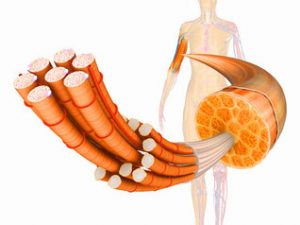 RF: Right. And so what that is, that is your brain that is not—has the inability to send the signal to that muscle. So you can keep pounding away. Take bench press, for example. A lot of people will bench press to develop their pecs, but if your brain has trouble activating your pecs, your triceps and shoulders are just going to take over and you can bench press all you want, the pecs will not be optimally stimulated and they won’t be optimally developed.
RF: Right. And so what that is, that is your brain that is not—has the inability to send the signal to that muscle. So you can keep pounding away. Take bench press, for example. A lot of people will bench press to develop their pecs, but if your brain has trouble activating your pecs, your triceps and shoulders are just going to take over and you can bench press all you want, the pecs will not be optimally stimulated and they won’t be optimally developed.
So we all have stubborn body parts that we struggle to develop, so this is related to muscular innervation, or the ability of the brain to send a signal through the nerves into the muscle. Well, in physical therapy they use these activation exercises to improve when people are injured. I’ve started using them for people, like you’ve said, who have been sitting all day. They have poor posture or maybe there’s just a muscle that’s really not developed well. And we’ve started incorporating those.
It’s a simple concept in theory, but you really have to know your anatomy to get it right. it’s pretty simple. You basically take the muscle to its most shortened position and do an isometric contraction with very, very, very light or no weight whatsoever and do 10 repetitions with a 10 second hold, isometric hold, on each repetition.
Now, where a lot of people screw this up is they try to go hard on it and they try to really like turn it into a workout and they end up turning on all synergists and stabilizing muscles surrounding the muscle that they’re trying to work. It should start off as a very gentle contraction until you learn to turn the target muscle on and only the target muscle and then you can further work on squeezing it harder.
These can be done daily. They can be done multiple times daily, which I will tend to do for people. If I have a bodybuilder and the judges have told him, man, your pecs are lagging. I will have them do pec activation exercises two to three times daily and then again before his pec workout in order to improve that.
So basically that wakes-up the brain, it improves the innervation or the nerve bundle into the muscle and it makes them contract. So now that you’ve turned the muscle on it’s like a light switch. You turn the muscle on, then you go to do your hard workout and now the muscle is working as it is supposed to. So in the bench press example, you activate your pecs beforehand then you go do your bench press and now you’re creating a stimulus to build a bigger chest.
So that’s kind of where I started with this activation stuff, and it’s really proven to be very effective for people not only returning from injury but also just in developing certain body parts. It’s pretty cool.
CW: That’s awesome. I can’t help but think as you’re talking about that, you know, we’re using a bodybuilder as an example. This could be for anybody. Just think, the posing element. Where you’re obviously trying to show your body to a panel of judges and to an audience and you’re trying to show them, look at my body and look at my muscles. Look what they can do. And so the connection that they have and all the effort and time spent in these positions and posing and contracting the muscles, they have probably—they’re at the top of the heap when it comes to that mind/muscle connection, right?
RF: No doubt.
CW: Just because no one has spent that amount of hours in front of a mirror just tweaking and positioning themselves in these ways. But their muscles are all alive. They have an intimate understanding of how to fire everything.
RF: Yep.
CW: And if regular people had some of that, you know, you could imagine. Not that people want to look like Arnold Schwarzenegger any day soon, but if they had his ability to pose in front of a mirror, they would make these muscles wake up.
 RF: Yeah, and there’s other implications, too, especially for the population today. A lot of it is pain. Back pain is one of the most debilitating—I’d say “injuries” because often times there’s no actual isolatable injury. A lot of times it’s just, oh, man, my back started killing me. Well, a lot of times it’s inactive glutes, it’s inactive transverse abdominis muscle in the abdomen, inactive internal obliques that stabilize the spine. I’ve had people—I had a guy who was a firefighter, ironically, recently—he wasn’t a client of mine, just a friend. And I saw him like hobbling into the gym one day like looking awful. And he told me, he said, it’s the first time he had gotten up in the past week. He had been completely down. Now this guy has five kids, five children. So he didn’t have, I mean, he was laid-up in bed, wife taking care of all the kids and couldn’t work and he said I did something to my back, tweaked my back.
RF: Yeah, and there’s other implications, too, especially for the population today. A lot of it is pain. Back pain is one of the most debilitating—I’d say “injuries” because often times there’s no actual isolatable injury. A lot of times it’s just, oh, man, my back started killing me. Well, a lot of times it’s inactive glutes, it’s inactive transverse abdominis muscle in the abdomen, inactive internal obliques that stabilize the spine. I’ve had people—I had a guy who was a firefighter, ironically, recently—he wasn’t a client of mine, just a friend. And I saw him like hobbling into the gym one day like looking awful. And he told me, he said, it’s the first time he had gotten up in the past week. He had been completely down. Now this guy has five kids, five children. So he didn’t have, I mean, he was laid-up in bed, wife taking care of all the kids and couldn’t work and he said I did something to my back, tweaked my back.
I said, okay. Come over here. I gave him a couple breathing drills, some abdominal activation work and he like stood up and he’s like, oh, man. This is good. I told him to do it a couple times a day and here like yesterday—so this was probably a week ago. And then yesterday he was in the gym doing front squats, throwing a medicine ball violently against the wall, jumps, all kinds of stuff. So a lot of times it’s really that simple. It’s just turning stuff on like a light switch.
CW: He hit something. And it’s because a lot of us, without even realizing it, we’ve just elected—even for people that work out. We go for a run or we go to the gym a few, three times, a week. But then we spend so much of our time in his half fetal position, this seated position, and we’re just—our body’s just turned off. We’re not standing, we’re not up on our feet moving around. Like people not that long ago, if you go back 100 years or more, people just weren’t sitting so darn much.
RF: Right.
CW: And it’s this culture that’s obviously kind of a global thing where just we’ve all kind of been conditioned to be in this seated position and it’s really, really hurt our physical health, obviously. So it’s great to get that kind of insight and I thank you for sharing some of that and obviously with that pec injury, you have a really good understanding of how all that works.
RF: Yeah. It was hilarious. I mean, it was kind of funny at the time, because my co-workers, I was a strength coach at the time, university. They would mess with me. They would put something up on a shelf and be like, hey, Ryan. Can you get that? I’m like, shut up. I couldn’t even lift my arm. But I got that sorted right away.
One other thing I want to talk about real quick, Chris, with proper activation, and this is controversial. I’m going to go ahead and admit it. It’s controversial and the impact is going to be small, but for some people a small impact is all that’s necessary to start to get results.
A lot of times our “stubborn body parts” aren’t just weak, they may be just covered with body fat. We all have fat deposits at different areas. We all have a “last place” that body fat wants to come off of. When you contract a muscle it gives off heat. This heat causes fat deposits from around that muscle to be released into the blood stream. This is called lypolysis.
Now, if you have trouble activating a certain muscle it is possible that you are going to have fat storage in that area, okay? So one of the things that I do with stubborn body parts where people are carrying excess body fat is I will have them do activation drills, then a workout for that body part and then I have some specific cardio protocols that I’ll have them to after. So the activation and the weight training helps release the fat from the area, then the cardio work helps to burn the fat from that area, if that makes sense.
And again, it’s a minor—you’re not going to go from looking like an elephant to a Victoria’s Secret model overnight. But I have seen it make some measurable changes in skin folds when doing this protocol.
CW: It obviously makes sense to me and you can’t help but think about the whole spot reducing theory, you know, when people—if I just do more crunches, more sit-ups, I’ll have this great six-pack over time.
RF: Right.
CW: It’s like, well, no.
RF: Not quite.
CW: Sit-ups kind of stink anyway for your abs, but that’s a whole other conversation. We could get into that.
RF: We could open that can of worms, too, yeah.
 CW: We could open that one wide open, yeah. But I understand, obviously, the theory behind it. If you’re dealing with more back fat or something, say as a man, but you aren’t spending maybe a good amount of time doing pull-ups and doing some of the exercises that would have the greatest impact on some of the biggest muscles in your back, but then all of a sudden you say, hey. I’m going to commit to X amount of pull-ups per week over 30, 60, 90 days and I have a hard time believing that you wouldn’t notice a shift in how your body looks, how it’s developed, how it feels firmer in that area, because you’ve dedicated a certain amount of time to that. And then like you said, you mentioned the science behind it, lypolysis. All of a sudden it’s like, okay, in essence it almost does work it’s just maybe there’s so much more that goes into it, too.
CW: We could open that one wide open, yeah. But I understand, obviously, the theory behind it. If you’re dealing with more back fat or something, say as a man, but you aren’t spending maybe a good amount of time doing pull-ups and doing some of the exercises that would have the greatest impact on some of the biggest muscles in your back, but then all of a sudden you say, hey. I’m going to commit to X amount of pull-ups per week over 30, 60, 90 days and I have a hard time believing that you wouldn’t notice a shift in how your body looks, how it’s developed, how it feels firmer in that area, because you’ve dedicated a certain amount of time to that. And then like you said, you mentioned the science behind it, lypolysis. All of a sudden it’s like, okay, in essence it almost does work it’s just maybe there’s so much more that goes into it, too.
RF: Oh, no doubt. It’s not a magic bullet thing. It’s not going to create miracles, but I definitely do, with the protocols, I have some supplement protocols that assist with the lypolysis and then the cardio portion is kind of important, too. And we talked a little bit, in brief, about how a steady-state aerobic exercise increases ghrelin levels. I’m not completely anti-cardio, but it’s just not the first thing that should be done.
So what a lot of people do when they lift weights, so the fat is released from that area, but then if they don’t burn it, it just gets deposited elsewhere on the body or right back where it came from. So that is why I do utilize the post-workout energy systems development work for the fat loss in that area.
CW: Yeah. I’ve never—I can’t say I’ve never—but most often I just don’t see someone with an ideal physique who only does cardiovascular training.
RF: I agree.
CW: You know, only does running, only does biking. There needs to be another side of it. There needs to be another component.
RF: Yeah, well, if you think about—weights are truly king when it comes to a better body. So if we talk about—a lot of people that have excess body fat will say, I just have a slow metabolism. My metabolism is sluggish. Your basal metabolic rate or BMR determines 60% to 75% of your daily calorie burn. That’s how much calories you burn just sitting on your butt. That doesn’t account for exercise.
CW: That’s your organs functioning and everything else.
 RF: Right. That’s just keeping you alive. Exercise is a very small percentage, believe it or not, of your daily calorie burn. So what increases BMR? Weight training boosts BMR. When you increase your BMR you literally burn fat when you’re sleeping. You hear a lot of get-rich-quick schemes talking about earn money even when you’re sleeping. Well, when you boost your BMR you burn fat even when you’re sleeping. So that’s why weight training should be the top priority.
RF: Right. That’s just keeping you alive. Exercise is a very small percentage, believe it or not, of your daily calorie burn. So what increases BMR? Weight training boosts BMR. When you increase your BMR you literally burn fat when you’re sleeping. You hear a lot of get-rich-quick schemes talking about earn money even when you’re sleeping. Well, when you boost your BMR you burn fat even when you’re sleeping. So that’s why weight training should be the top priority.
I look at it as a hierarchy. If you only have, let’s say, 45 minutes a week to train, I would do three 15-minute weight training sessions. If you have a little more time than that, I would probably add-in some high intensity interval type cardio. And then still, if you have more time after that, then you start adding in more steady-state aerobic type cardio. And that’s kind of the order I start introducing these things for people because you have to go with the biggest bang for your buck, which when it comes to changing your body composition, is weight training.
CW: Yeah. And obviously understanding that and knowing that in the way you teach and go about working with people, can you share—you’ve already shared a couple really cool stories with some of the people that you’ve worked with. Can you share a few of the other transformations that you’ve witness, maybe just recently, with some people that you’re working with?
RF: Yeah, man, I’ve had quite a few interesting ones. One of them a while back was a—he was actually a triple medalist at the Beijing Olympics. He was a swimmer and I knew his coach and his coach contacted me for some help with some off season training. And we worked him out and gave him a program and he actually shredded-up pretty nicely, so an already elite Olympic athlete, triple medalist, again, in the Olympics. So that was pretty fascinating.
I had another guy, a football player, he was a funny one. He weighed 350 pounds, so that’s a lot.
CW: He was a football player. He was a defensive tackle or an offensive lineman, right?
RF: Yes. He was a D-lineman, but the coaches needed him closer to 315. And because he was really explosive, but he could only do about two plays before he had to get a substitution. So they needed to improve his work capacity. So with him I didn’t change any of his foods. Like, I didn’t take away any foods that he ate and enjoyed, I just moderated the amounts and worked a little bit on when to include them.
For example, he loves his Country Time Lemonade, which as you know is full of sugar. It’s basically just sugar water. And so he would wake up in the morning—and in his mind, he had—his background was not in health and education. So he just assumed lemonade equals lemons, lemons is a fruit, this is good for me. So he would get up in the morning and smash several of those Country Time Lemonade cans even when he was doing nothing. Like, before practice or before training. So he’d be sitting and then drinking 140 grams of sugar. And so we just basically modulated a little bit and said, all right, keep your lemonade but we’re going to have it around workout time or around practice time instead of just while you’re sitting around. So that was one change we made.
 So start with two cups of cruciferous veggies and a protein shake. He would have 50 grams of whey isolate protein, two cups of veggies and then eat his pizza. Well, what ended up happening was he got full sooner so he didn’t eat as much pizza. So that was my way of getting him to eat less without making him—without telling him he couldn’t eat what he wanted. Does that make sense?
So start with two cups of cruciferous veggies and a protein shake. He would have 50 grams of whey isolate protein, two cups of veggies and then eat his pizza. Well, what ended up happening was he got full sooner so he didn’t eat as much pizza. So that was my way of getting him to eat less without making him—without telling him he couldn’t eat what he wanted. Does that make sense?
CW: Right. And still providing all the nutrition that he required.
RF: Yeah, exactly.
CW: Being an athlete and having to be physical, yeah.
RF: Exactly. So a lot of people do the opposite. They eat their high calorie foods first that don’t take up a lot of space in their stomach and then they remain hungry even though they’ve overeaten on calories. So that’s one of the kind of—I hate the term “life hack”, because there’s a lot of stuff out there that is kind of cheesy, but it’s a great hack for getting in shape, is starting every meal with two cups of veggies and if it’s going to be a particularly junk food-esque meal, two cups of veggies and a protein shake. And that goes a long way in helping you to eat less.
The other side of that is you have to listen to when your body’s had enough. Once you have your veggies and your protein shake and you’re eating whatever other food you are, you need to kind of stop when you’re about 80% satisfied. So don’t eat to the point where you’re like, oh, I’m so bloated. Don’t eat to the point of being full, eat to the point of being satisfied, if that makes sense.
CW: Right, because a little bit of hunger won’t kill you.
RF: Right.
CW: If you’re 80% of the way there, you’re like, okay. If I just have one more big glass of water, like, I’m find. And ten minutes later you’re not even thinking about food.
RF: If there’s one like put it all into one sentence for the best chance of success at fat loss, I would say it would be learn to embrace a tolerable level of hunger. So not so hungry where you’re like starving and going to eat everything in sight. Mildly hungry. If you can get used to that feeling—it’s not an emergency. How many of us panic when we get a little bit hungry? And it’s ridiculous because we live in the western society where we have access to food whenever we need it. And so it’s like, we get a little bit hungry and we’re like, oh, my gosh. I’m starving, because we’re dramatic like that, too. We’re dramatic, too, right? I’m starving. And it’s like, you’re not starving. You ate two hours ago.
So learning just a mild level of hunger, starting the meal, eating and then finishing the meal while you still have a mild level of hunger, that’s one of the best things. If you can embrace that concept, you don’t need to get too nitpicky about your food selections. You can really kind of eat what you want. I know that sounds crazy, but it’s not an empty promise. If you learn to modulate your appetite you can do it.
CW: And life goes on and we’re both about the same age, you know, married with kids. You realize something. The wisdom starts to be part of your life, you know, because when you’re 20 you just think you know it all and you really don’t. And the older you get you realize that you know—you at least start to accept the fact that you don’t know a lot of stuff but you’re open to learning and you’re open to things. But simple is what works best in life. The simpler things are, the more effective they can be and the more sustainable they can be.
Yeah, so obviously we’ve talked about not overeating. We’ve talked about muscle activation techniques or how to wake the body up, how to wake the muscles up and working with existing habits. So if I was to say those are three things for sustainable fat loss, is it really that easy? People are going to say, is it really that easy? Those are the three things I’m supposed to do? And I’m going to actually get results?
RF: It kind of really is, but there is one other thing and that’s consistency.
CW: Okay.
 RF: You can’t be 100% switched on only 50% of the time. I’d rather you be 90% switched on 100% of the time. Again, it goes back to what a lot of people accidentally do, meaning well, but they’re perfect on their diet. No deviation Monday through Friday afternoon. And then they fall off the wagon Friday night, Saturday, Sunday and get right back on the wagon Monday and Monday through Friday and it’s the same repeating thing and they come to me and say, I’m eating really healthy I just don’t understand. It’s like, well, you are for about half of the week, but then the other half of the week you’re eating like a complete and total asshole. So if you can be consistent with that eating—so let’s do this. Let’s make your super perfect healthy days a little less perfect and make your really, really shitty days a little more perfect and even it out a little bit, more balancing in the favor of being healthy and then you know what? You’re going to be just fine. And usually they are.
RF: You can’t be 100% switched on only 50% of the time. I’d rather you be 90% switched on 100% of the time. Again, it goes back to what a lot of people accidentally do, meaning well, but they’re perfect on their diet. No deviation Monday through Friday afternoon. And then they fall off the wagon Friday night, Saturday, Sunday and get right back on the wagon Monday and Monday through Friday and it’s the same repeating thing and they come to me and say, I’m eating really healthy I just don’t understand. It’s like, well, you are for about half of the week, but then the other half of the week you’re eating like a complete and total asshole. So if you can be consistent with that eating—so let’s do this. Let’s make your super perfect healthy days a little less perfect and make your really, really shitty days a little more perfect and even it out a little bit, more balancing in the favor of being healthy and then you know what? You’re going to be just fine. And usually they are.
So you’ve got to do this for the long-haul. It takes a lot of patience and honestly it falls right into line with the action of ghrelin. Do not chase fast fat loss. Yes, you can lose fat super fast, but it will always, always, always lead to a rebound. I don’t care about your before and after picture. I care about your two years after your after picture. So the transformation that I’m most impressed with, I don’t give a shit about your 12 week transformation, your eight week transformation, those are all great. When I was 20 I was really impressed by those. I wanted to learn how they did it. The way you do it, secret, cat’s out of the bag, super, super extreme, unsustainable diet, training, drugs. Done. There you go. That’s how it’s done.
Now I care about how to get an awesome transformation that’s sustainable that you can live your life afterwards. So one of the things I tell people is limit yourself to about 0.5% to 1% of your body weight per week in fat loss, tops. So for a 200 pound individual, we’re talking 1 to 2 pounds of fat per week. A 400 pound individual, 2 to 4 pounds of fat per week. It sounds slow, but that’s the best way to make progress without creating a ghrelin surge that’s going to leave you super hungry after your diet. So you’ve got to be patient, otherwise you’ll be in shape for a small flash of time and then you’ll be in worse shape than when you started if you try to do things too fast.
CW: Yeah, be consistent over the long-haul. And that works for everything. That works for your finances. If you took a certain percentage, 3%, 4%, whatever it is, of every dollar you earned every week over a period of years, and invested it, you’d be—everyone would have more money than they knew what to do with when they hit 50 or 60 years old. But we just don’t do it. Most people just don’t do it. But it really is that easy. Really.
I mean, it’s not a hard thing, it’s just a very hard thing to do, to follow through with. And follow-through is where people fail. So you take all this great information that you’ve shared and talked about, obviously you created a program, Fat Loss Activation.
RF: Yes.
CW: And it’s a guide. It’s a way to tame your hunger, activate your muscles and spend very little time a day doing any exercise and following this kind of 80/20 rule and achieving the body that you want as long as you’re willing to commit the time to it.
RF: Exactly. Really, I was excited about this project for a couple reasons. So first of all my background is in hardcore training. I was training high level athletes. I like to train that way myself. I primarily probably train like a hybrid between a bodybuilder, power lifter and Strongman. So that’s how I like to train. But what I found is friends, relatives, whenever they’d ask me for advice they’d look at me like I had three heads when I’d talk about squats and farmer’s walks and I realized it’s just not for everyone. A lot of people need something much simpler, something that’s more on their level.

So this program, all it requires in terms of equipment is a bench and some dumbbells. So you can do this—this is an at-home program. Again, when you talked about investing your money, a bench and some adjustable dumbbells, I’ll tell you what, that is a mild, mild investment in your physique. Truthfully, you go on like Craig’s List or Ebay or something, I bet you could get both for maybe $200, tops, shipped to your door.
CW: Think of that, the cost of one grocery bill for the week.
RF: Yeah, exactly. Or if you’re really inventive, make your own bench. Go get the raw supplies, get some stuff and make it yourself. I’ve got a buddy that makes all of his own gym equipment. So a small investment there, time investment is minimal. Fifteen minutes is the longest workout in the thing for the base workout. I have included some cardio accelerator protocols for anyone who does want to train more. But the base program that is results producing is only 15 minutes a day, five days a week.
I’m sorry. I don’t care who you are. You can—if you want to find an extra 15 minutes, delete Facebook, delete Instagram, delete Snapchat from your phone. There, I just gave you two extra hours a day.
CW: There you go. Wake up a few minutes earlier.
RF: Yeah, you’ve got to make that a priority. And I prefer to tell people to try to train early in the day if you can. We all have different lives, different schedules, but what I found is most people that put training off to the end of the day will often times find a reason to not do it or maybe it’s not them finding a reason, but maybe life just gets in the way. If it’s important to you, get up, do it, get it out of the way and then you have the rest of your day to let it flow as it may.
Yeah, I’m really excited about this program. It’s also, of all the program, nutrition plans, I’ve ever done or written, it’s probably the most simple in terms of nutrition. It’s one that really—I really try to educate the customer on how to eat intuitively and how to listen to their bodies and learn what you need as opposed to following some spreadsheet of, oh, I need to eat three ounces of tuna—I don’t even like tuna—and you eat two ounces of sweet potato—how do you get two ounces of sweet potato, blah, blah, blah.
CW: Do I weigh it? How do I…
 RF: Yeah. Exactly. So it’s none of that. It’s really, in my opinion, really common sense nutrition that if you stick with it you’re consistent with it. I’ll tell you what, give yourself—this is going to sound crazy—it’s completely against what everyone else is doing in the market these days. Everyone wants to sell you on a 12-week transformation. Do this program for a year without faltering, no slip-ups, just one year. I promise you you are going to see a different person in the mirror a year from now, because a lot of people get on these 30-day challenges, one week detox, 12 week transformation and what happens year after year, they keep having the same body, or even worse body. How about we—the saying if it ain’t broke don’t fix it. The current system, the current culture is broke. So let’s fix it. Let’s start thinking in terms of periods of six months to a year or a year to two years or a good amount of time to see change with reasonable methods rather than overnight rapid change.
RF: Yeah. Exactly. So it’s none of that. It’s really, in my opinion, really common sense nutrition that if you stick with it you’re consistent with it. I’ll tell you what, give yourself—this is going to sound crazy—it’s completely against what everyone else is doing in the market these days. Everyone wants to sell you on a 12-week transformation. Do this program for a year without faltering, no slip-ups, just one year. I promise you you are going to see a different person in the mirror a year from now, because a lot of people get on these 30-day challenges, one week detox, 12 week transformation and what happens year after year, they keep having the same body, or even worse body. How about we—the saying if it ain’t broke don’t fix it. The current system, the current culture is broke. So let’s fix it. Let’s start thinking in terms of periods of six months to a year or a year to two years or a good amount of time to see change with reasonable methods rather than overnight rapid change.
CW: Hey, I speak from experience because we talked obviously—discussed this whole program, Fat Loss Activation, months and months ago and I implemented a lot of your strategies when I was diving through all this great literature and all this stuff that you had written and talked about. And I applied it to my own life. And in the last four or five months I have kept off 15 to 20 pounds. I’ve kept it off, maintained it and just feel great.
I can’t say—I would still say ideally I would like probably another three to five pounds off me and be able to maintain that and I think as we get closer to kind of that goal weight it can be a little bit more challenging to nip those last few pounds. But I feel great. I am not keeping myself from eating stuff that I enjoy. I’ll have a protein shake before I have a meal just to help satisfy me there. Sometimes I have a protein shake before I go to—you know, that late night craving that hits you after dinner sometime around 9:00. You know, the kids are sleep and you know, oh, my gosh. My dinner just didn’t cut it tonight, you know, so I’ll have a protein shake instead of having a cheat or having something sweet.
I’ll tell you, it just feels awesome and this is not me just shooting off a bunch of nonsense. It’s 100% applicable from everything that you’ve discussed in the program and I have maintained it and I feel great and I don’t see any reason why this is not the way I’m just going to be for the rest of time. It’s not something that you can’t maintain. That’s what whole point. That’s why diet fail, because it’s not sustainable. If we really look at ourselves and say, you know, I’m unhappy with where I am. Then you need something that is going to make you happy for the long term, not give you a month of happiness.
 RF: Exactly. Well, that’s great to hear, man. I’m glad you’re implementing those principles and I always find it funny. I do eat a lot of healthy foods. I eat a lot of high quality proteins, a ton of veggies, fruits and all that, but when I’m out in a social setting, you know, I’ll eat whatever I want and it’s always funny. My friends are like, wait, you’re eating pizza? I thought you couldn’t eat pizza and look like that or like, how are you doing that? It’s like, well, it’s called getting to a point where I’m living a reasonable, sustainable lifestyle that is not overly restrictive. I still train hard, but I like to eat, too. So it’s my lifestyle. I don’t ever—the bottom line is, if you’re ever looking at your calendar going, oh, when is this diet going to end, you’ve failed. It shouldn’t be like that. If you’re looking for the end date you’ve already kind of lost the battle, because that means your battling against your willpower. The way I eat now, I could do this the rest of my life, 100%, no problems and be happy.
RF: Exactly. Well, that’s great to hear, man. I’m glad you’re implementing those principles and I always find it funny. I do eat a lot of healthy foods. I eat a lot of high quality proteins, a ton of veggies, fruits and all that, but when I’m out in a social setting, you know, I’ll eat whatever I want and it’s always funny. My friends are like, wait, you’re eating pizza? I thought you couldn’t eat pizza and look like that or like, how are you doing that? It’s like, well, it’s called getting to a point where I’m living a reasonable, sustainable lifestyle that is not overly restrictive. I still train hard, but I like to eat, too. So it’s my lifestyle. I don’t ever—the bottom line is, if you’re ever looking at your calendar going, oh, when is this diet going to end, you’ve failed. It shouldn’t be like that. If you’re looking for the end date you’ve already kind of lost the battle, because that means your battling against your willpower. The way I eat now, I could do this the rest of my life, 100%, no problems and be happy.
CW: That yo-yo effect is just so bad for you and your health, to be up, to be down, to be up, to be down. It’s really not good. And your body does not like that. It likes to maintain a particular weight and it is so easy to do with this program.
Well, thank you so much for everything and just having this conversation today just confirms everything that I’m doing and I’m a strength coach and I’m a certified sports nutritionist and yet I still picked up so much information from this and implemented it and saw results. So I mean, this can work for anybody. I promise.
RF: Thank you, Chris. I really appreciate you having me on today. I enjoyed talking with you.
CW: Yeah, it’s been wonderful. I really hope everyone can benefit from Fat Loss Activation. I know you will. You just have to dedicate yourself to it and good things will certainly happen. We’ll talk to you again real soon, Ryan.
RF: All right. We’ll see you. Bye bye.
CW: Bye bye.


